CHILD THERAPY SERIES
A SERIES OF BOOKS EDITED BY
CHARLES SCHAEFER
Cognitive-Behavioral Play Therapy
Susan M. Knell
Play Therapy in Action: A Casebook for Practitioners
Terry Kottman and Charles Schaefer, Eds.
Family Play Therapy
Lois Carey and Charles Schaefer, Eds.
The Quotable Play Therapist
Charles Schaefer and Heidi Kaduson, Eds.
Childhood Encopresis and Enuresis
Charles Schaefer
The Therapeutic Powers of Play
Charles Schaefer, Ed.
Play Therapy Techniques
Donna Cangelosi and Charles Schaefer, Eds.
Children in Residential Care: Critical Issues in Treatment
Charles Schaefer and Arthur Swanson, Eds.
Therapeutic Use of Childs Play
Charles Schaefer, Ed.
Clinical Handbook of Sleep Disorders in Children
Charles Schaefer, Ed.
Clinical Handbook of Anxiety Disorders in Children and Adolescents
Andrew R. Eisen, Christopher A. Kearney, and Charles Schaefer, Eds.
Practitioners Guide to Treating Fear and Anxiety in Children and Adolescents: A Cognitive-Behavioral Approach
Andrew R. Eisen and Christopher A. Kearney
Family Play Therapy
Edited by
Charles E. Schaefer, Ph.D.
Lois J. Carey, M.S.W.

A JASON ARONSON BOOK
ROWMAN & LITTLEFIELD PUBLISHERS, INC.
Published in the United States of America
by Rowman & Littlefield Publishers, Inc.
A wholly owned subsidiary of The Rowman & Littlefield Publishing Group, Inc.
4501 Forbes Boulevard, Suite 200, Lanham, Maryland 20706
www.rowmanlittlefield.com
PO Box 317
Oxford
OX2 9RU, UK
Copyright 1994 by Jason Aronson Inc.
First Rowman & Littlefield Edition 2004
All rights reserved. No part of this publication may be reproduced, stored in a retrieval system, or transmitted in any form or by any means, electronic, mechanical, photocopying, recording, or otherwise, without the prior permission of the publisher.
British Library Cataloguing in Publication Information Available
Library of Congress Cataloging-in-Publication Data
Family play therapy / [edited by] Charles E. Schaefer, Lois J. Carey.
p. cm.
Includes bibliographical references and index.
ISBN: 978-1-56821-150-3
1. Play therapy. 2. Family psychotherapy. I. Shaefer, Charles E. II. Carey, Lois J.
[DNLM: 1. Mental Disordersin infancy and childhood. 2. Mental Disorderstherapy. 3. Family Therapy. 4. Play Therapy. WS 350.2 F198]
RJ505.P6F36 1994
616.89156dc20
DNLM/DLC
for Library of Congress
93-47160
Printed in the United States of America
 The paper used in this publication meets the minimum requirements of American National Standard for Information SciencesPermanence of Paper for Printed Library Materials, ANSI/NISO Z39.48-1992.
The paper used in this publication meets the minimum requirements of American National Standard for Information SciencesPermanence of Paper for Printed Library Materials, ANSI/NISO Z39.48-1992.
CONTENTS
Part I:
Assessment and Diagnosis
Wendy Miller
Eleanor C. Irwin and Elaine S. Malloy
Patricia Tracy Ross
Ibrahim N. Orgun
Richard Chasin
Gavin M. Smith
Part II
Major Therapeutic Schools
David E. Scharff
Jill Savege Scharff
James H. Straughan
Bonnie Eaker
Louise F. Guerney and Bernard Guerney, Jr.
Thomas G. Hardaway II
Ellen F. Wachtel
Joan Zilbach and Sharon Gordetsky
David V. Keith and Carl A. Whitaker
Part III
Specialized Therapeutic Techniques
Lois Carey
Helen B. Landgarten
Adam Blatner
Robert S. Schachter
Part IV
Adaptations for Special Populations
Gino DeSalvatore and Deborah Rosenman
Lisa Hensley McElreath and Toni Hembree Eisenstadt
Steve Harvey
CONTRIBUTORS
Adam Blatner, M.D.
Bingham Child Guidance Center
Louisville, KY
Lois Carey, M.S.W.
Center for Sandplay Studies
Upper Grandview (Nyack), NY
Richard Chasin, M.D.
Family Institute of Cambridge
Cambridge, MA
Gino DeSalvatore
New England Memorial Hospital
Stoneham, MA
Bonnie Eaker (now Weil), Ph.D.
Private Practice
New York City, NY
Toni Hembree Eisenstadt, Ph.D.
Tempe, AZ
Sharon Gordetsky, Ph.D.
Parents and Childrens Services
Boston, MA
Bernard Guerney, Jr., M.D.
Penn State University
University Park, PA
Louise F. Guerney, Ph.D.
Penn State University
University Park, PA
Thomas G. Hardaway, M.D.
Texas A & M College of Medicine
Temple, TX
Steve Harvey, Ph.D.
Private Practice
Colorado Springs, CO
Eleanor C. Irwin, Ph.D.
University of Pittsburgh
Pittsburgh, PA
David V. Keith, M.D.
University of Wisconsin
Madison, WI
Helen B. Landgarten, M.A.
Professor Emeritus, Loyola Marymount University
Los Angeles, CA
Elaine S. Malloy (now Portner), M.S.W.
University of Pittsburgh
Pittsburgh, PA
Lisa Hensley McElreath, M.A.
University of Oklahoma (Interne)
Health Sciences Center
Oklahoma City, OK
Wendy M. Miller, Psy.D.
Private Practice
Portland, OR
Ibrahim N. Orgun, M.D.
Mount Sinai Hospital
Hartford, CT
Deborah Rosenman
New England Memorial Hospital
Stoneham, MA
Patricia Tracy Ross
University of Massachusetts
Amherst, MA
Robert S. Schachter, Ed.D.
Mount Sinai School of Medicine
New York City, NY
David E. Scharff, M.D.
Washington School of Psychiatry
Georgetown Medical School
Washington, DC
Jill Savege Scharff, M.D.
Washington School of Psychiatry
Georgetown Medical School
Washington, DC
Gavin M. Smith, Ph.D.
Sanctuary Psychological Services
Abington, PA
James H. Straughan
University of Oregon
Eugene, OR
Ellen F. Wachtel, Ph.D.
Private Practice
New York City, NY
Carl A. Whitaker, M.D.
University of Wisconsin
Madison, WI
Joan Zilbach, M.D.
Fielding Institute
Santa Barbara, CA
PREFACE
Since the turn of the century, four major approaches to child therapy have been employedpsychodynamic, play, cognitive-behavioral, and family therapy. In recent years, there has been a trend toward greater integration of these major schools. In particular, the principles of play therapy and family therapy are being combined into a new approach, which has been termed Family Play Therapy.
Family therapists are discovering that the use of play activities facilitates the communication and involvement of the entire family, particularly young children, in the therapeutic process. They are also learning that the familys innate creativity can be activated through play activities. Family play therapy is the generic name for an extensive and heterogeneous group of treatment interventions that continue to expand each year.
There is certainly a large number of children with serious problems in our society today, and new ways of reaching them therapeutically must be implemented. Children are often the bearers of the family pathology and they naturally rebel at being assigned the role of identified patient. In many cases, the problem really lies in the dysfunctional family into which they have been born. The family therapy approach was developed to address this situation.
Next page


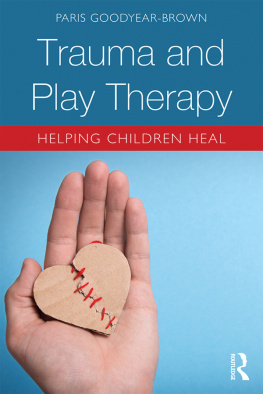
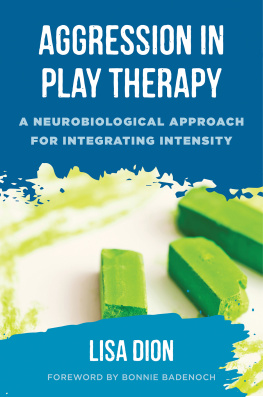
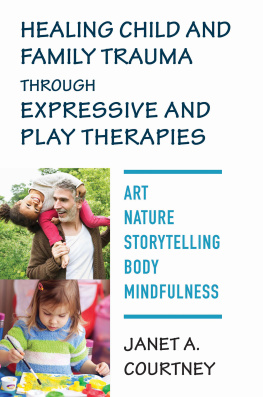
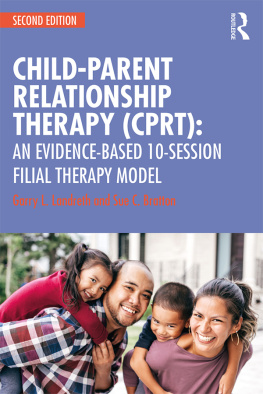

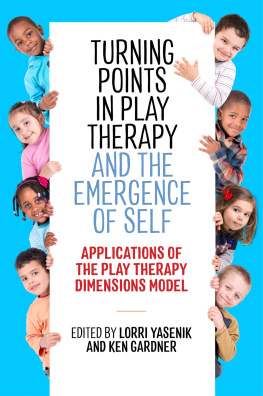
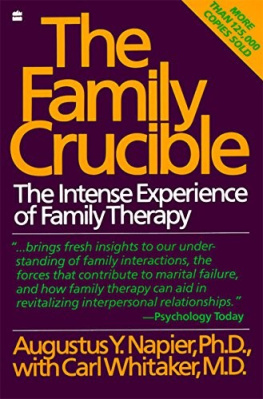

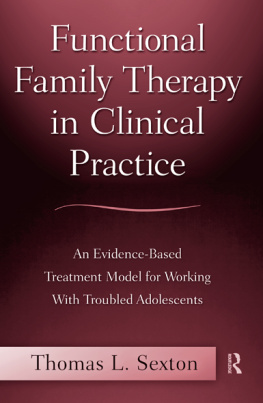

 The paper used in this publication meets the minimum requirements of American National Standard for Information SciencesPermanence of Paper for Printed Library Materials, ANSI/NISO Z39.48-1992.
The paper used in this publication meets the minimum requirements of American National Standard for Information SciencesPermanence of Paper for Printed Library Materials, ANSI/NISO Z39.48-1992.